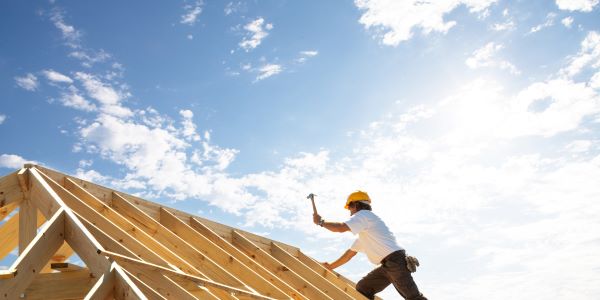Blog
Protecting Your Home From Radon

When you own a home, there are certain things you must do to keep it safe and secure, like installing smoke alarms with carbon monoxide detectors and changing the batteries regularly. What you might not be aware of is the dangers posed by radon.
Radon is a form of colorless and odorless gas that is naturally present in soil and rocks. This gas forms when radioactive metals, like uranium and radium, decay. Unfortunately, it can seep into unprotected homes through cracks in the basement or foundation, and it can prove harmful and even fatal to humans.
How can you find out whether there’s radon in your home, and how do you protect against its harmful effects?
The Importance of Protecting Your Home from Radon
When you breathe in radon, the radioactive particles it contains can become trapped in your lungs. As these particles break down, they may damage lung tissue and lead to the onset of lung cancer, especially if you are exposed to high levels over an extended period.
Radon is the second leading cause of lung cancer after smoking, and it is estimated that over 20,000 deaths each year are linked to radon exposure.
Implementing Radon Resistance
Whether you’re purchasing a new construction home or you live in an older structure, there are steps you can take to mitigate the threat of radon in your home. First, you’ll want to test for radon.
This could be as simple as using a DIY test kit, although you can also hire a professional testing service for a more accurate assessment and advice on addressing high readings. There are several possibilities for mitigating radon if high levels are present in your home.
Sealing Methods
Because radon invades your home through cracks in the foundation, one of the most effective deterrents is to add impermeable layers that seal off the source. It’s not uncommon for older homes to lack an effective vapor barrier between the soil and foundation.
Luckily, you can install a high-performance barrier after the fact. Whether you have a crawl space or a slab basement, you can apply suitable plastic sheeting directly to floor and wall surfaces to create a seal against moisture and gas intrusion.
From there, you can finish with flooring materials and sheetrock, if the space is livable square footage. It’s best to have professionals complete this process to ensure compliance with building codes.
Improved Ventilation
Proper sealing and ventilation work together to minimize radon intrusion and prevent buildup in your living spaces. You could add exterior ventilation in the form of a soil depressurization system that pulls radon from beneath the home. Or you can install vent fans with piping that runs to the roof to safely vent gases outside.
Radon Is Treatable
While it’s unlikely that you can totally eliminate radon in your home, you can significantly reduce its presence. With testing and mitigation efforts, followed by installing radon detectors, you can keep your home and family safe from this harmful gas.
If you’re interested in entering the construction field to create safe and comfortable living spaces for families, contact RocketCert now to learn more about exam prep for professional trade licenses.
